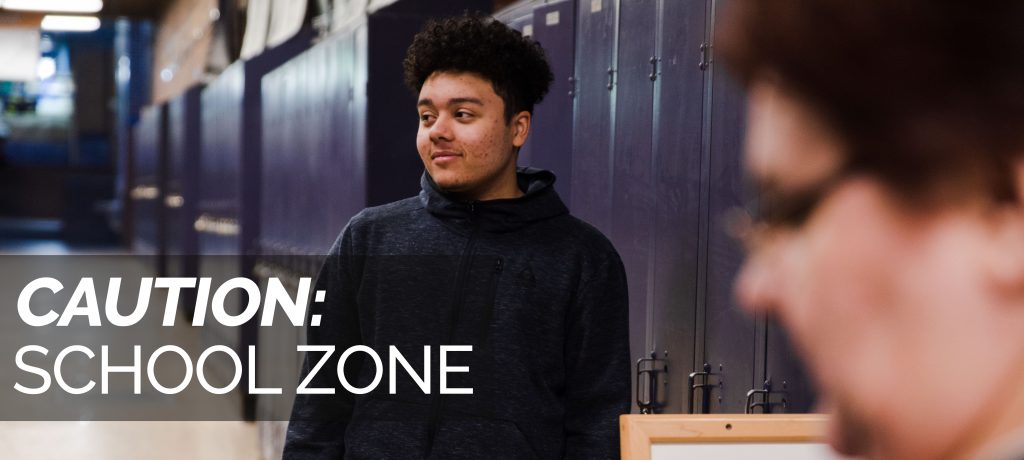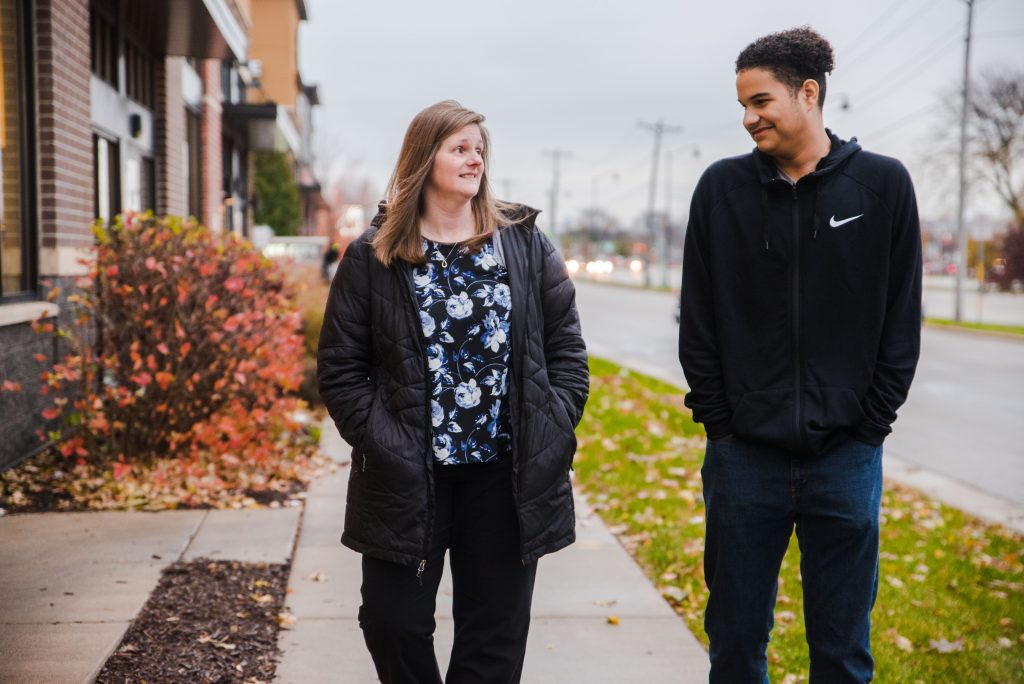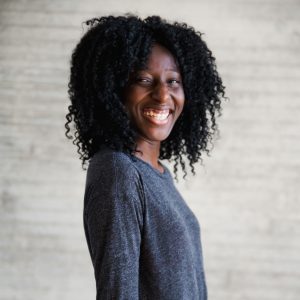
A parent’s worst fear is losing a child.
That fear escalates as more reports of school shootings surface. When those reports fill a news cycle and something that would have once been unthinkable happens more frequently, parents start to wonder if the next time it will happen at their children’s schools.
With the constant consumption of news media regarding school shootings or police brutality, it’s easy for parents to worry for their children. According to the Child Mind Institute, parents worry more about shootings than children do; however, children are good at picking up on their parent’s fears.
On top of that, parents of color have added layers of fear because of instances of racism and discrimination, particularly in the form of police brutality and immigration deportation. People of color are far more likely to be stopped by police due to racial stereotyping. In 2015, 26 percent of people killed by police were black, despite black people making up only 13 percent of the population. The cases of families being torn apart, and people dying by the hands of police, especially young black men, are now being reported more than they’ve ever been.
Some parents worry about never seeing their kids again after they leave home. Others struggle with the stress of being a multicultural family and coming to terms with the reality of what that means in America today. All just want their children to be safe.
For Luann Williams, worry hasn’t turned to fear quite yet.
Williams, 45, has three sons, and her youngest, Marcus, 16, goes to Madison East High School. While she is not entirely fearful, she does prepare her son, who is half black, for stressful situations that may occur.
“There’s a little stress each day,” Williams says. “We’ve talked about contingency plans of things that might happen or could happen or have happened at schools. He knows where all the exits are. He knows which way to go in the school depending on where or if situations arise.”

For her, the worry first came when Marcus hit middle school. It was the first time he would travel to school using the city bus, and the worry heightened as he continued to high school because school shootings were on the rise. That is different from when Williams was young herself.
“I’ve known situations that have happened since I was really young. It never evolved into school settings when I was younger or as I was growing up, but I would say the last 15 years, it’s been that consistent venue,” she says.
And even with all of her worries about public school, Williams would still rather send Marcus there than an alternative school. She believes taking a deeper look into the trauma children may experience in their lives and developing more avenues of support can help the systematic problem with school shootings.
“I work with [infants] to 5-aged kids, and the trauma that I see almost every day, there needs to be more support,” Williams says. “That trauma carries into the school system K-12, where there’s not a lot of support and understanding of what that trauma looks like, what that trauma means. So a systemic approach would be starting from day one.”
In September, La Follette High School, also in Madison, was placed on lockdown after two shootings near the school. As a parent, Williams felt sad and challenged by the incidents because she felt the systems were not working properly.
“I don’t want schools to have to put in metal detectors. I don’t want them to lock the doors,” she says.
Ultimately, Williams just wants her son to experience life, but remain safe. She wants to be an example and good reflection to him.
“You want them to be kids, you want them to experience things,” Williams says. “You can’t hold onto them forever. but I think there’s a difference in having fun and being good.”
Julie Jacobson, 54, often feels nervous dropping off her children at school. As a mother of four, with two currently attending Madison East High School, she doesn’t know if she’ll ever see them again. She regularly prays with her daughter Jalie, 15, and son Joshua, 16.
“I tell them I love them a lot, because I think about all the parents that have lost their children. [It] makes you want to send your kid to school with a bulletproof vest and just protect them, but you can’t do that,” Jacobson says. “It’s scary, but I try to have faith.”
On top of worrying for their general safety, Joshua is half black, and Jacobson worries about him being a black man in America.
“When I send my kids to the mall, I’m like completely paranoid because I feel like one little thing can make a cop snap, and I’ve seen it happen,” Jacobson says. “I think about how the smallest thing can escalate into the most scary, violent situation where I really feel like a lot of policemen don’t have respect for kids and don’t have respect for people of color. So I do get really nervous. I don’t want to send my kids to the mall.”
Although Jacobson tries keeping her children at home as often as she can when they’re not in school, she would prefer to send them to public school rather than look into other schooling options because it is the best choice for her, as well as her children.
Although public school seems dangerous due to school shootings currently, what makes her feel more unsafe is the lack of appropriate response from the government, she says. She believes the government is ignoring a larger problem within American society.
“When I watched the news and I see things on TV where the government could make choices to make safer gun laws and they don’t, that makes me feel even more unsafe,” Jacobson says. “It’s the combination of the shootings and the decisions that our government makes to like completely ignore what’s happening … that makes it really scary.”
Maricela Gutierrez knows just how hard it can be for children to experience discrimination at a young age. As a Latina mother of two, it’s scary for her to send her children to school. She believes that they will be treated differently because they don’t fit what some people may regard as the stereotypical appearance of Latinos.
Gutierrez’s children, Elián, 15, and Emilio, 17, are half Mexican and half American Indian. She and her children are fair-skinned, and people often don’t know how to react to their ethnic backgrounds, especially in today’s political climate.
“Because they have a Latino last name like I do, people assume they don’t speak English,” she says. “My boys have learned firsthand what it’s like to be treated differently because of being an immigrant, and they were born here. They had fallout from a lot of the white students, and they had fallout from the Latino students because nobody could figure out where they fit.”
People also treat her and her children differently because she has cerebral palsy, a disorder that affects her ability to move and maintain balance. People don’t know how to interact with her and thus, often talk to her sons instead.

Gutierrez is an American citizen, and one time someone didn’t believe her citizenship, so she had to prove it in a process that she described as scary and disheartening. She doesn’t want her children to experience something like that, and with the recent arrests in Wisconsin by Immigration and Customs Enforcement, known as ICE, it makes it even more difficult for her to send her children to school.
From Sept. 21 to 24, ICE agents arrested 83 immigrants across Wisconsin, with 20 from Dane County. During those days, several businesses closed, some immigrant workers were scared to leave their homes, and several students were pulled from school.
“They need an education. I’m just very blessed that I have some contact people at East,” she says. “I can call and say, ‘Hey, how are the boys doing today?’ We have very open communication.”
Her children also need the socialization that comes with school. Both of her sons are introverted, and she worries that they won’t have opportunities for human interaction outside of school. The way she sees it, the only solution to her fears is dialogue.
“We shouldn’t have to worry about this,” she says. “There are other countries that don’t have these things in their school systems. There are other countries that are a lot more volatile, too. So it’s literally a question of doing research and a bunch of checks and balances, but it has to be an open dialogue.”
Williams, Jacobson and Gutierrez may fear for their children’s safety, but such events are uncommon, so while the possibility of the threat is real, the chance of it happening is slim. The Madison Metropolitan School District has positions, including a safety and security coordinator, in place to keep schools safe. Joseph Balles, the current coordinator, works with the Madison Police Department and the school district to mitigate potential threats to the school.
Schools also are creating new programs and updating existing ones. Some new features in Madison schools include formalizing student voices more, via safety intervention teams, to get them engaged with school safety. Teams made up of students from a range of backgrounds — including those who have been suspended before — focus on ways to keep schools safe. Statewide, districts are adding these intervention teams.
“Ultimately, even though kids may face consequences through some type of behavior that they’ve exhibited at school, it’s Day Two,” Balles says, meaning that those kids deserve a second chance to be included. We can’t exclude them and discount them because they, too, have human emotional needs to feel safe at school.”
Along with that, the district uses 26 different school safety practices, including practicing drills and employing educational resource officers. Challenges remain, though.
“Even talking about our kids that … aren’t part of the mainstream … how are we engaging them in a nonconfrontational, nonthreatening way and getting their assistance, thoughts and ideas about how we can keep the school safe? I think that’s something we can do a lot of a better job at,” Balles says.
He adds that although the district is prepared for full-scale evacuations of its buildings, many schools don’t have locations where students and families can easily be reunited.
Although there are improvements to be made, Balles wants to create safe and welcoming environments for students. “We’re trying to take ourselves around kids — not just at school, but … beyond the school door, [to] help them back in the neighborhood, and care for the whole family,” Balles says.

Fatoumata, an online associate, is majoring in journalism with a focus in reporting and serves at the creative director for Melanin Speaking at UW-Madison. She hopes to write for a magazine or be an investigative reporter.